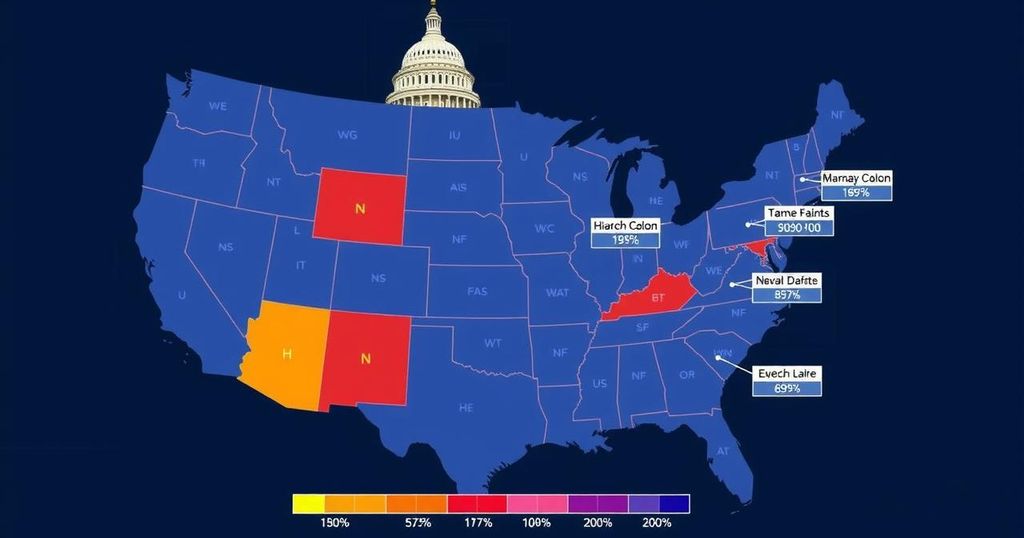Strategic Insights for Election Night: Key House Races to Monitor

As Election Night nears, the focus is on key House races that could influence the balance of power in the U.S. House of Representatives. Democrats can regain control with four additional seats, but unprecedented scenarios are possible. Critical contests in Virginia, North Carolina, New York, and California will gauge shifts in voter demographics, particularly among Black and Hispanic voters, while also reflecting broader electoral trends that connect House races to the presidential landscape.
As Election Night approaches, attention centers on several House races that could provide critical insights into the broader electoral landscape. Mr. Kondik, an established analyst in American elections, argues that Democrats hold a viable opportunity to reclaim control over the U.S. House of Representatives, requiring only four additional seats to surpass the current majority. Despite prevailing trends that correlate presidential and House election outcomes, there is a possibility of an unprecedented scenario where Republicans may regain the presidency while losing the House. Key House races in Virginia, notably the Second District and the Seventh District, are pivotal. The former, with its competitive military demographics in Virginia Beach, may set an initial tone for the election results. Should either party succeed here, it could signal early momentum for that side. Additionally, the dynamics surrounding Black voters’ support for Democrats will be scrutinized in North Carolina’s First District, where incumbent Representative Don Davis aims to maintain his seat amid shifting demographics and national trends. In New York and California, several Biden-won districts represented by Republicans are essential for Democrats seeking to gain a majority. The 19th District in New York stands out as a potential battleground due to its past alignment with the national popular vote margins. Likewise, California’s 13th and 22nd Districts, both heavily Hispanic, will reveal crucial information about the evolving relationship between Latino voters and the Democratic Party. Furthermore, the performance of voters with college degrees versus those without will be tested in Maine’s Second and Nebraska’s Second Districts. Incumbents in these areas reflect contrasting demographic dynamics, highlighting the growing divide in voter preferences. Ultimately, the results in these key districts will inform not only the fate of the House but also the presidential race, emphasizing the interconnectedness of local and national electoral trends. This Election Night will thus provide a wealth of data to analyze both immediate implications for party control and broader demographic shifts within the American electorate.
The article discusses the critical House races to watch as election night approaches, particularly focusing on how these contests may reflect broader electoral trends and shifts within the American electorate. The balance of power in the U.S. House of Representatives is at stake as the Democrats aim to reclaim control, while changes in voter demographics, including shifts in support from Black and Hispanic communities, are poised to impact the outcomes. Attention is drawn to races in pivotal districts across Virginia, North Carolina, New York, and California, highlighting their significance in predicting party success and voter alignment.
In summary, the upcoming election night will offer significant insights into both the potential shifts in control of the U.S. House of Representatives and the evolving demographics of the American electorate. Key races in Virginia, North Carolina, New York, and California will serve as barometers of party strength and voter sentiment. The implications of these elections extend far beyond party control, reflecting broader trends that may influence national politics for years to come.
Original Source: www.nytimes.com







